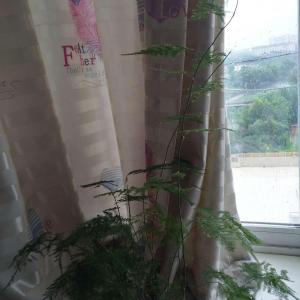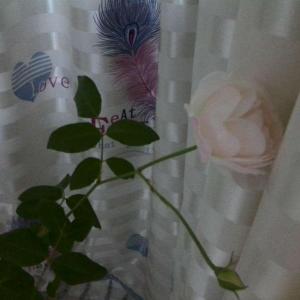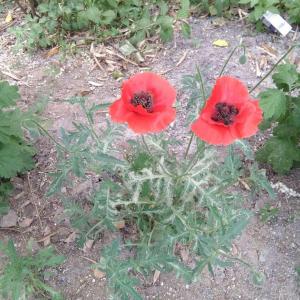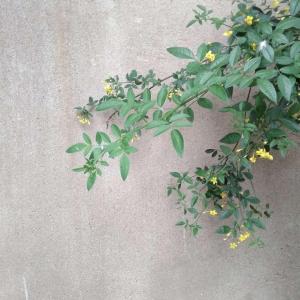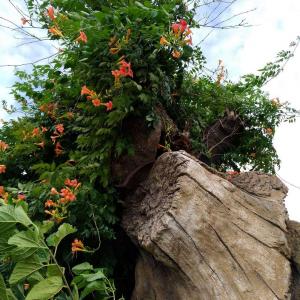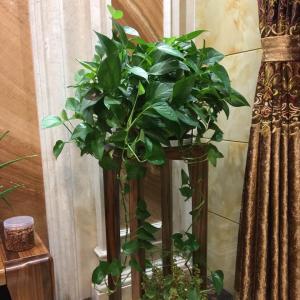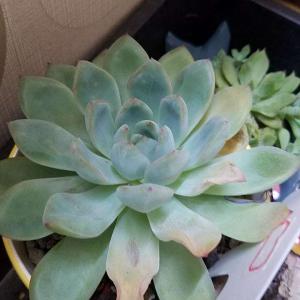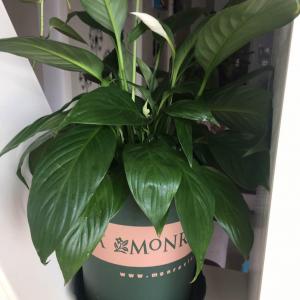文章
Dummer. ゛☀
2017年08月02日

Family - Polygonaceae
Stems - Single tp typically multiple from a big taproot, erect, solid, herbaceous but stout, to +/-1m tall, strongly nerved to carinate, densely pubescent (at least in the basal 1/2), mostly glabrous in the inflorescence.
Leaves - Alternate, petiolate. Petioles densely pubescent, flat on the adaxial surface, rounded abaxially, 1-6cm long. Blades pubescent below, less so above, oblong to elliptic, cordate at the base (or rounded to truncate in the uppermost leaves), to +15cm long, +7cm broad, with crenulate to crisped margins, the apex somewhat acute. Midrib and lateral veins of the larger leaves often reddish. Ocrea +/-1.5cm long, densely pubescent, greenish-brown.
Inflorescence - Many thin spreading branches to +/-30cm long, glabrous. Branches typically perpendicular to the main axis of the stem. Whorls of flowers clearly and fairly evenly spaced along the branches of the inflorescence. Each whorl subtended by one bract. Bracts reduced upward, each whorl with +/-10 flowers. Pedicels 1-5mm long, glabrous, jointed in the middle.
Flowers - Flowers mostly perfect, 1-2mm long at anthesis, quickly expanding in fruit. Stamens 6. Filaments short, translucent, .2-.8mm long, glabrous. Anthers yellow, to 1.2mm long, .5mm broad. Ovary .7mm long (in flower), green, glabrous, 3-angled. Stigmas 3, translucent, expanded at the apex, .6mm long. Perianth green, glabrous, 3 "sepals" shorter the the 3 inner "petals." All parts of the flower glabrous (or with a few hairs on the outer parts). Margins of the expanded inner perianth parts with +/-5 teeth. Teeth pectinate to 3mm long. Tubercles 1-2 per flower, 1/2 as long as the valve.
Flowering - April - July.
Habitat - Disturbed sites, railroads, roadsides.
Origin - Native to Europe.
Other info. - This species has been reported from just one Missouri county (St. Louis) and has not been seen in the state since. It is much more common in states to the southeast. The plant can be identified by its densely pubescent (at least basally) stems, its pubescent leaves, its widely spreading inflorescence branches, and its pectinate fruits.
Stems - Single tp typically multiple from a big taproot, erect, solid, herbaceous but stout, to +/-1m tall, strongly nerved to carinate, densely pubescent (at least in the basal 1/2), mostly glabrous in the inflorescence.

Leaves - Alternate, petiolate. Petioles densely pubescent, flat on the adaxial surface, rounded abaxially, 1-6cm long. Blades pubescent below, less so above, oblong to elliptic, cordate at the base (or rounded to truncate in the uppermost leaves), to +15cm long, +7cm broad, with crenulate to crisped margins, the apex somewhat acute. Midrib and lateral veins of the larger leaves often reddish. Ocrea +/-1.5cm long, densely pubescent, greenish-brown.

Inflorescence - Many thin spreading branches to +/-30cm long, glabrous. Branches typically perpendicular to the main axis of the stem. Whorls of flowers clearly and fairly evenly spaced along the branches of the inflorescence. Each whorl subtended by one bract. Bracts reduced upward, each whorl with +/-10 flowers. Pedicels 1-5mm long, glabrous, jointed in the middle.
Flowers - Flowers mostly perfect, 1-2mm long at anthesis, quickly expanding in fruit. Stamens 6. Filaments short, translucent, .2-.8mm long, glabrous. Anthers yellow, to 1.2mm long, .5mm broad. Ovary .7mm long (in flower), green, glabrous, 3-angled. Stigmas 3, translucent, expanded at the apex, .6mm long. Perianth green, glabrous, 3 "sepals" shorter the the 3 inner "petals." All parts of the flower glabrous (or with a few hairs on the outer parts). Margins of the expanded inner perianth parts with +/-5 teeth. Teeth pectinate to 3mm long. Tubercles 1-2 per flower, 1/2 as long as the valve.

Flowering - April - July.
Habitat - Disturbed sites, railroads, roadsides.
Origin - Native to Europe.
Other info. - This species has been reported from just one Missouri county (St. Louis) and has not been seen in the state since. It is much more common in states to the southeast. The plant can be identified by its densely pubescent (at least basally) stems, its pubescent leaves, its widely spreading inflorescence branches, and its pectinate fruits.
0
0
文章
Dummer. ゛☀
2017年08月02日

Family - Orchidaceae
Stems - To +/-50cm tall, erect, herbaceous, simple, single or double from the base, glabrous, with vertical ridges formed by decurrent leaf and bract tissue, green.
Leaves - 2-5 per stem, sessile, sheathing, glabrous, entire, narrowly elliptic-lanceolate, acute at apex, the largest with blades to +/-12cm long, +/-2cm broad, dull green above, slightly more shiny below. The midrib deeply impressed adaxially, expressed abaxially.
Inflorescence - Terminal spike to +/-10cm long (tall). Axis glabrous. Each flower subtended by a lanceolate bract. Bracts shorter or longer than the flowers (depending on the variety), green, glabrous, entire.
Flowers - Sessile, green. Floral tube -1cm long, typically twisted, glabrous. Sepals 3, ovate to orbicular, glabrous, entire, to 4mm long, 3mm broad. The lateral two spreading. Petals yellow-green. The spur to 6mm long, slightly curved, glabrous. Lower lip blunt at the apex to very slightly emarginate, to +/-4mm long, 3mm broad, glabrous, with two small basal projections and a tubercle at the base adaxially. Lateral petals rounded to ovate or obovate, spreading, 3-4mm long and broad, glabrous. Column -2mm long and broad, facing forward. Pollinia 1.3mm long. Pollen white.
Flowering - May - September.
Habitat - Mesic bottoms, mesic prairies.
Origin - Native to U.S.
Other info. - This species can be found scattered throughout Missouri but is relatively uncommon. The plant is fairly easy to identify because of its green flowers, which are spurred and have an undivided lower lip.
P. flava is commonly divided into two varieties. Both these varieties occur in Missouri but may be hard to differentiate. The varieties are differentiated on the basis of bract length on the inflorescence and also number of leaves per plant. The longer-bracted plants, var. herbiola (R. Br.) Luer are more common in Missouri than the shorter-bracted plants, var. flava.
Stems - To +/-50cm tall, erect, herbaceous, simple, single or double from the base, glabrous, with vertical ridges formed by decurrent leaf and bract tissue, green.
Leaves - 2-5 per stem, sessile, sheathing, glabrous, entire, narrowly elliptic-lanceolate, acute at apex, the largest with blades to +/-12cm long, +/-2cm broad, dull green above, slightly more shiny below. The midrib deeply impressed adaxially, expressed abaxially.

Inflorescence - Terminal spike to +/-10cm long (tall). Axis glabrous. Each flower subtended by a lanceolate bract. Bracts shorter or longer than the flowers (depending on the variety), green, glabrous, entire.

Flowers - Sessile, green. Floral tube -1cm long, typically twisted, glabrous. Sepals 3, ovate to orbicular, glabrous, entire, to 4mm long, 3mm broad. The lateral two spreading. Petals yellow-green. The spur to 6mm long, slightly curved, glabrous. Lower lip blunt at the apex to very slightly emarginate, to +/-4mm long, 3mm broad, glabrous, with two small basal projections and a tubercle at the base adaxially. Lateral petals rounded to ovate or obovate, spreading, 3-4mm long and broad, glabrous. Column -2mm long and broad, facing forward. Pollinia 1.3mm long. Pollen white.

Flowering - May - September.
Habitat - Mesic bottoms, mesic prairies.
Origin - Native to U.S.
Other info. - This species can be found scattered throughout Missouri but is relatively uncommon. The plant is fairly easy to identify because of its green flowers, which are spurred and have an undivided lower lip.
P. flava is commonly divided into two varieties. Both these varieties occur in Missouri but may be hard to differentiate. The varieties are differentiated on the basis of bract length on the inflorescence and also number of leaves per plant. The longer-bracted plants, var. herbiola (R. Br.) Luer are more common in Missouri than the shorter-bracted plants, var. flava.
0
0
文章
Dummer. ゛☀
2017年08月01日

Family - Euphorbiaceae
Stems - To +40cm tall, erect, simple or branching in the apical 1/2, single from a taproot and fibrous roots, herbaceous, typically reddish at least at the base, appressed pubescent, terete.

Leaves - Alternate, petiolate. Petioles +/-5mm long, antrorse pubescent. Blades linear-lanceolate to linear oblong, to +5cm long, 1cm broad, entire to shallow serrate or crenate, dull green above, light green below, punctate below, antrorse pubescent. Lowest pair of lateral veins emerging at or -1mm above the base of the leaf tissue.

Inflorescence - Brachtiate androgynous racemes to 8-9mm long. Bracts surrounding the pistillate flowers toothed, with 3-5 teeth on each margin, ciliate-margined, antrorse pubescent.
Flowers - Pistillate flowers minute, 3-4 per raceme. Ovary densely pubescent, .4-.6mm long. Style pubescent, -1mm long. Petals translucent, .5mm long, ciliate. Fruits pubescent, with one seed per carpel. Staminate flowers dense and terminating the raceme, in a capitate cluster to +/-5mm long. Petals 4, reflexed, cupped and deflexed at the apices, glabrous, whitish to golden yellow, ovate, acute, .4mm long. Pedicels glabrous, .5mm long, jointed in the middle. Anthers curled. Pollen yellow.

Flowering - May - October.
Habitat - Rocky open glades, rocky prairies, low meadows, rocky open woods, roadsides, railroads.
Origin - Native to U.S.
Other info. - This little species is found throughout much of Missouri but is less common in the northern 1/3 of the state. The plant can be identified by its linear-oblong leaves, short petioles, and appressed pubescent stems.
Stems - To +40cm tall, erect, simple or branching in the apical 1/2, single from a taproot and fibrous roots, herbaceous, typically reddish at least at the base, appressed pubescent, terete.

Leaves - Alternate, petiolate. Petioles +/-5mm long, antrorse pubescent. Blades linear-lanceolate to linear oblong, to +5cm long, 1cm broad, entire to shallow serrate or crenate, dull green above, light green below, punctate below, antrorse pubescent. Lowest pair of lateral veins emerging at or -1mm above the base of the leaf tissue.

Inflorescence - Brachtiate androgynous racemes to 8-9mm long. Bracts surrounding the pistillate flowers toothed, with 3-5 teeth on each margin, ciliate-margined, antrorse pubescent.
Flowers - Pistillate flowers minute, 3-4 per raceme. Ovary densely pubescent, .4-.6mm long. Style pubescent, -1mm long. Petals translucent, .5mm long, ciliate. Fruits pubescent, with one seed per carpel. Staminate flowers dense and terminating the raceme, in a capitate cluster to +/-5mm long. Petals 4, reflexed, cupped and deflexed at the apices, glabrous, whitish to golden yellow, ovate, acute, .4mm long. Pedicels glabrous, .5mm long, jointed in the middle. Anthers curled. Pollen yellow.

Flowering - May - October.
Habitat - Rocky open glades, rocky prairies, low meadows, rocky open woods, roadsides, railroads.
Origin - Native to U.S.
Other info. - This little species is found throughout much of Missouri but is less common in the northern 1/3 of the state. The plant can be identified by its linear-oblong leaves, short petioles, and appressed pubescent stems.
0
0
文章
Miss Chen
2017年08月01日

A
l igual que las demás plantas, los cactus y Suculentas necesitan el cambio a una maceta mayor cada 2 ó 3 años, dependiendo de la especie y de su crecimiento.
¿Por qué cambiar de maceta?
• La planta ya no cabe en ese recipiente.
• Salen raíces por el agujero de drenaje.
• El sustrato se empobrece y es necesario aportar más de otro fresco.
Los pasos son los siguientes:
1. Prepara una maceta o contenedor que sea sólo un poco mayor que la que tenía. Si fuera excesivamente grande, acumularía mucha humedad y además, como cada 2 ó 3 años se volverá a trasplantar, es inútil excederse en el tamaño del tiesto.
Maceta de plástico y de barro
2. Recuerda al elegir que las macetas de plástico deben regarse menos que las de barro porque retienen el agua más tiempo. Estas pierden agua por las paredes porosas.
3. Otro consejo sobre macetas se refiere al aspecto estético. Si la planta es de porte alargado, escoge una maceta alta, o si, por el contrario, la planta tiene un crecimiento bajo, mejor decántate por una maceta bajita.
4. El cambio de maceta NO se recomienda hacerlo en invierno porque los daños ocasionados a las raíces pueden provocar la destrucción de la planta por pudrición. Hazlo durante el periodo de crecimiento de la planta, es decir, durante primavera y verano.
5. Si observas que en el trasplante el cepellón o las raíces han sido alteradas o rotas, espera unos 10 ó 15 días para regar la planta. En cualquier caso, tras un cambio de maceta los riegos deben ser contenidos, con el agua justa. Sólo cuando los signos de crecimiento aparezcan en la planta (yemas, coloración verde vivo de los extremos, etc.) se aumenta el aporte de agua.
6. Para no pincharte al manejar los cactus puedes:
Usar guantes especiales.
Doblar unas cuantas hojas de periódico y utilizarlas para coger la planta. Es muy común el uso de periódicos.
Si el ejemplar tiene un cierto tamaño, usa cuerdas enlazandolas por la parte baja de la planta para elevarlo. Pide la ayuda de alguien y protégete el cuerpo y los ojos (ten unas gafas de plástico muy baratas).
7. Emplea un sustrato idoneo para Cactus y demás suculentas. Debe tener una característica fundamental: que sea suelto, aireado, poroso.
En los centros de jardinería venden lo que se suele llamar "sustrato o tierra para cactus". Sólo hay que tener en cuenta que vienen poco abonados por lo que hay que añadirle fertilizantes.
La otra opción es hacerte tu propia mezcla: un 50% de arena de río lavada y gruesa y el otro 50% de turba negra con algo de bolitas de corcho blanco. Añade también a la mezcla un poco de fertilizante de lenta liberación. Con esto, rellenas el hueco que queda en la nueva maceta algo mayor que la que tenía.
Para las Cactáceas epifitas como los géneros Epiphyllum y Rhipsalis, que viven en los árboles de las selvas tropicales, usa una tierra convencional para plantas de interior.
8. En el fondo de la maceta pon unos trozos de tiesto de barro roto para impedir que se tapone el agujero de drenaje. Es mejor que la grava en el fondo porque ésta termina colmatándose con tierra y al final no deja pasar el agua. Abre varios taladros si hace falta.
9. Por último, sobre la superficie de la maceta, extiende gravas, chinos o rocas volcánicas.

l igual que las demás plantas, los cactus y Suculentas necesitan el cambio a una maceta mayor cada 2 ó 3 años, dependiendo de la especie y de su crecimiento.
¿Por qué cambiar de maceta?
• La planta ya no cabe en ese recipiente.
• Salen raíces por el agujero de drenaje.
• El sustrato se empobrece y es necesario aportar más de otro fresco.
Los pasos son los siguientes:
1. Prepara una maceta o contenedor que sea sólo un poco mayor que la que tenía. Si fuera excesivamente grande, acumularía mucha humedad y además, como cada 2 ó 3 años se volverá a trasplantar, es inútil excederse en el tamaño del tiesto.
Maceta de plástico y de barro
2. Recuerda al elegir que las macetas de plástico deben regarse menos que las de barro porque retienen el agua más tiempo. Estas pierden agua por las paredes porosas.
3. Otro consejo sobre macetas se refiere al aspecto estético. Si la planta es de porte alargado, escoge una maceta alta, o si, por el contrario, la planta tiene un crecimiento bajo, mejor decántate por una maceta bajita.
4. El cambio de maceta NO se recomienda hacerlo en invierno porque los daños ocasionados a las raíces pueden provocar la destrucción de la planta por pudrición. Hazlo durante el periodo de crecimiento de la planta, es decir, durante primavera y verano.
5. Si observas que en el trasplante el cepellón o las raíces han sido alteradas o rotas, espera unos 10 ó 15 días para regar la planta. En cualquier caso, tras un cambio de maceta los riegos deben ser contenidos, con el agua justa. Sólo cuando los signos de crecimiento aparezcan en la planta (yemas, coloración verde vivo de los extremos, etc.) se aumenta el aporte de agua.
6. Para no pincharte al manejar los cactus puedes:
Usar guantes especiales.
Doblar unas cuantas hojas de periódico y utilizarlas para coger la planta. Es muy común el uso de periódicos.
Si el ejemplar tiene un cierto tamaño, usa cuerdas enlazandolas por la parte baja de la planta para elevarlo. Pide la ayuda de alguien y protégete el cuerpo y los ojos (ten unas gafas de plástico muy baratas).
7. Emplea un sustrato idoneo para Cactus y demás suculentas. Debe tener una característica fundamental: que sea suelto, aireado, poroso.
En los centros de jardinería venden lo que se suele llamar "sustrato o tierra para cactus". Sólo hay que tener en cuenta que vienen poco abonados por lo que hay que añadirle fertilizantes.
La otra opción es hacerte tu propia mezcla: un 50% de arena de río lavada y gruesa y el otro 50% de turba negra con algo de bolitas de corcho blanco. Añade también a la mezcla un poco de fertilizante de lenta liberación. Con esto, rellenas el hueco que queda en la nueva maceta algo mayor que la que tenía.
Para las Cactáceas epifitas como los géneros Epiphyllum y Rhipsalis, que viven en los árboles de las selvas tropicales, usa una tierra convencional para plantas de interior.
8. En el fondo de la maceta pon unos trozos de tiesto de barro roto para impedir que se tapone el agujero de drenaje. Es mejor que la grava en el fondo porque ésta termina colmatándose con tierra y al final no deja pasar el agua. Abre varios taladros si hace falta.
9. Por último, sobre la superficie de la maceta, extiende gravas, chinos o rocas volcánicas.

1
0
Mohamad.hamidizade:👏🏼
文章
Dummer. ゛☀
2017年08月01日

Family - Brassicaceae
Stems - Herbaceous, erect, from rhizomes, glabrous, green or becoming purple in the strong sun, ribbed, to +/-35cm tall, branching.

Leaves - Alternate, petiolate, deeply pinnatifid. Basal leaves to -10cm long, 2-2.5cm broad, with +/-6 main divisions per side. Cauline leaves similar but reduced. All leaves glabrous or with very few short hairs. Divisions of the leaves toothed. Upper leaves with thinner and fewer divisions than the lower. Tissue connecting the divisions of the leaves .2-.3mm broad (use a lens to see).
Inflorescence - Terminal and axillary racemes to +10cm long. Axis glabrous. Pedicels to 4mm long in flower, expanding to +/-1cm long in fruit, glabrous. Inflorescence compact in flower, quickly expanding. Siliques to 1cm long, 1mm in diameter, cylindric but slightly compressed, glabrous, with a beak to 1mm long.

Flowers - Petals 4, distinct, spatulate, yellow, glabrous, to +4mm long, 1.5mm broad, rounded at the apex. Stamens 6, erect, 4 larger and 2 smaller. Filaments yellow, glabrous, to 3mm long. Anthers yellow, 1mm long. Ovary cylindric, green-yellow, glabrous, 2mm long in flower, superior. Style .5mm long. Stigmas globose-capitate, .7mm broad. Sepals 4, distinct, yellow, erect to spreading, cupped, mostly glabrous but often with a few hairs at the apex externally, entire, 2-2.5mm long, to 1mm broad, subulate.

Flowering - May - September.
Habitat - Moist low ground, streambanks, wet fields and meadows.
Origin - Native to Europe.
Other info. - This little species can be found scattered throughout Missouri. The plant can be identified by its yellow flower petals, which are 4-8mm long, and its pinnately divided leaves, which have toothed margins. The wet habitat of the plant and its creeping stems with fibrous roots are other good characteristics to look for.
Stems - Herbaceous, erect, from rhizomes, glabrous, green or becoming purple in the strong sun, ribbed, to +/-35cm tall, branching.

Leaves - Alternate, petiolate, deeply pinnatifid. Basal leaves to -10cm long, 2-2.5cm broad, with +/-6 main divisions per side. Cauline leaves similar but reduced. All leaves glabrous or with very few short hairs. Divisions of the leaves toothed. Upper leaves with thinner and fewer divisions than the lower. Tissue connecting the divisions of the leaves .2-.3mm broad (use a lens to see).
Inflorescence - Terminal and axillary racemes to +10cm long. Axis glabrous. Pedicels to 4mm long in flower, expanding to +/-1cm long in fruit, glabrous. Inflorescence compact in flower, quickly expanding. Siliques to 1cm long, 1mm in diameter, cylindric but slightly compressed, glabrous, with a beak to 1mm long.

Flowers - Petals 4, distinct, spatulate, yellow, glabrous, to +4mm long, 1.5mm broad, rounded at the apex. Stamens 6, erect, 4 larger and 2 smaller. Filaments yellow, glabrous, to 3mm long. Anthers yellow, 1mm long. Ovary cylindric, green-yellow, glabrous, 2mm long in flower, superior. Style .5mm long. Stigmas globose-capitate, .7mm broad. Sepals 4, distinct, yellow, erect to spreading, cupped, mostly glabrous but often with a few hairs at the apex externally, entire, 2-2.5mm long, to 1mm broad, subulate.

Flowering - May - September.
Habitat - Moist low ground, streambanks, wet fields and meadows.
Origin - Native to Europe.
Other info. - This little species can be found scattered throughout Missouri. The plant can be identified by its yellow flower petals, which are 4-8mm long, and its pinnately divided leaves, which have toothed margins. The wet habitat of the plant and its creeping stems with fibrous roots are other good characteristics to look for.
0
0
文章
Dummer. ゛☀
2017年07月31日

Family - Asteraceae
Stems - Flowering scapes to +/-35cm long (tall), terete, hollow, 2-3mm in diameter, striate-nerved, glabrous except at the apex below the involucre, simple, typically 1-2 per plant but can be many more. Hairs of the scapes below the involucre glandular (the glands at the tips of the hairs are purple). Roots of the plant long and fibrous, with large nodular growths. All parts of the plant with milky sap.

Leaves - In a basal rosette, entire to coarsely (2-6) dentate, acute, linear-oblong, bluish-green, often glaucous, glabrous except at the very base (adaxially), to +/-15cm long, +/-1.5cm broad.
Inflorescence - Single flowerhead terminating the flowering scape.
Involucre - Involucre to 1.5cm long, uniseriate. Phyllaries distinct, linear, -1.5cm long, 2mm broad, bluish-green, glabrous.

Ray flowers - Fertile. Corolla tube to 6mm long, whitish, glabrous to sparse pillose. Ligule yellow-orange, to +1.5cm long, +2.5mm broad, sparse pilose externally, glabrous internally, 5-toothed at the apex. Stamens adnate at the apex of the corolla tube. Filaments short, to 1mm long, glabrous. Anthers connate around the style, +/-5mm long, yellow-orange. Style exserted beyond the anthers, antrorsely barbellate, typically undivided. Pappus in two series (biseriate). Outer series of +/-10 short lanceolate scales to -1mm long. Inner series of +/-20 capillary bristles to -1cm long. The bristles barbellate. Achenes with +/-15 ribs, mostly glabrous except on the angles where they are antrorse strigose, +/-3mm long at maturity, brownish-black at maturity. Receptacle flat, naked.

Disk flowers - Absent.
Flowering - April - June.
Habitat - Prairies, glades, bluffs, sandy fields, open woods, roadsides.
Origin - Native to U.S.
Other info. - This handsome species can be found in the Ozark region of Missouri. It can be identified by its large yellow-orange flowerheads, basal leaves, milky sap, and large root nodules. Another species, K. virginica is similar but lacks the root nodules and has much smaller flowerheads. Both species can grow side by side.
Stems - Flowering scapes to +/-35cm long (tall), terete, hollow, 2-3mm in diameter, striate-nerved, glabrous except at the apex below the involucre, simple, typically 1-2 per plant but can be many more. Hairs of the scapes below the involucre glandular (the glands at the tips of the hairs are purple). Roots of the plant long and fibrous, with large nodular growths. All parts of the plant with milky sap.

Leaves - In a basal rosette, entire to coarsely (2-6) dentate, acute, linear-oblong, bluish-green, often glaucous, glabrous except at the very base (adaxially), to +/-15cm long, +/-1.5cm broad.
Inflorescence - Single flowerhead terminating the flowering scape.
Involucre - Involucre to 1.5cm long, uniseriate. Phyllaries distinct, linear, -1.5cm long, 2mm broad, bluish-green, glabrous.

Ray flowers - Fertile. Corolla tube to 6mm long, whitish, glabrous to sparse pillose. Ligule yellow-orange, to +1.5cm long, +2.5mm broad, sparse pilose externally, glabrous internally, 5-toothed at the apex. Stamens adnate at the apex of the corolla tube. Filaments short, to 1mm long, glabrous. Anthers connate around the style, +/-5mm long, yellow-orange. Style exserted beyond the anthers, antrorsely barbellate, typically undivided. Pappus in two series (biseriate). Outer series of +/-10 short lanceolate scales to -1mm long. Inner series of +/-20 capillary bristles to -1cm long. The bristles barbellate. Achenes with +/-15 ribs, mostly glabrous except on the angles where they are antrorse strigose, +/-3mm long at maturity, brownish-black at maturity. Receptacle flat, naked.

Disk flowers - Absent.
Flowering - April - June.
Habitat - Prairies, glades, bluffs, sandy fields, open woods, roadsides.
Origin - Native to U.S.
Other info. - This handsome species can be found in the Ozark region of Missouri. It can be identified by its large yellow-orange flowerheads, basal leaves, milky sap, and large root nodules. Another species, K. virginica is similar but lacks the root nodules and has much smaller flowerheads. Both species can grow side by side.
0
0
文章
Dummer. ゛☀
2017年07月30日

Family - Asteraceae
Stems - To +60cm tall, erect, herbaceous, annual, from a taproot, typically single from the base and simple in the basal 1/2-2/3. Lower stem appearing woody, 3-5mm in diameter, grayish-brown. Stems in inflorescence divaricate, glabrous, green, angled or grooved.

Leaves - Mostly absent at anthesis. Leaves of the inflorescence linear, sessile, with punctate dots (use lens to see) and minute serrulate teeth on the leaf margins (use lens to see), +/-1mm broad, to 6cm long.
Inflorescence - Many small flower heads terminating each branch of the inflorescence. Stems spreading to +/-50cm broad at anthesis in a "mound" shape. Each flower head subtended by linear bracts giving way to the involucre.
Involucre - +/-2-3mm broad, 2-3mm tall, essentially biseriate. Lower series with green phyllaries. Phyllaries glabrous, linear-lanceolate, +/-2mm long, 1mm broad, acute. Inner series of phyllaries yellow-green (translucent at the base), glabrous, +3mm long, 1.5-1.8mm broad at the apex, acute, with the apical 1/4 spreading outward.

Ray flowers - +/-8 per flower head, spreading, pistillate and fertile. Ligule yellow, 3-4mm long, 2mm broad, elliptic-oblong, glabrous, with 2 impressed veins above (expressed below). Corolla tube 1-1.5mm long, whitish, glabrous. Style slightly exserted and bifurcate, whitish, .5-.6mm long, glabrous. Stigmas 1mm long, yellow, glabrous. Pappus absent or a minute, translucent crown.
Disk flowers - Disk +/-3mm broad, with +/-15 flowers. Flowers staminate. Corolla tube translucent-yellow, glabrous, 3mm long, 5-lobed. Lobes spreading, yellow, acute, +/-.5mm long, glabrous. Stamens 5, adnate at the base of the corolla tube. Filaments translucent, .7mm long. Anthers yellow, connivent around the undivided style, 1mm long, partially exserted. Style +2mm long, translucent in the basal 2/3, with the apical 1/3 pubescent and yellowish and exserted. Receptacle flat, naked but with ridges around the flower bases. Pappus a translucent awned crown. Awns equaling or exceeding the corolla. Crown (undivided portion) short, .3-.5mm long.

Flowering - July - October.
Habitat - Upland prairies, limestone and dolomite glades, bluff tops, riverbanks, fallow fields, disturbed sites, roadsides, railroads.
Origin - Native to U.S.
Other info. - This attractive little species can be found in the southwest corner of Missouri. Although it is not seen in the plant photo above, the plant nearly always grows from a single trunk-like base and then branches widely in the upper half (the whole plant being as wide or wider than tall). This species grows in profusion along roadsides in the Great Plains and is quite common there. It is far less abundant in Missouri.
A synonym is Gutierrezia dracunculoides (DC.) S.F. Blake
Stems - To +60cm tall, erect, herbaceous, annual, from a taproot, typically single from the base and simple in the basal 1/2-2/3. Lower stem appearing woody, 3-5mm in diameter, grayish-brown. Stems in inflorescence divaricate, glabrous, green, angled or grooved.

Leaves - Mostly absent at anthesis. Leaves of the inflorescence linear, sessile, with punctate dots (use lens to see) and minute serrulate teeth on the leaf margins (use lens to see), +/-1mm broad, to 6cm long.
Inflorescence - Many small flower heads terminating each branch of the inflorescence. Stems spreading to +/-50cm broad at anthesis in a "mound" shape. Each flower head subtended by linear bracts giving way to the involucre.
Involucre - +/-2-3mm broad, 2-3mm tall, essentially biseriate. Lower series with green phyllaries. Phyllaries glabrous, linear-lanceolate, +/-2mm long, 1mm broad, acute. Inner series of phyllaries yellow-green (translucent at the base), glabrous, +3mm long, 1.5-1.8mm broad at the apex, acute, with the apical 1/4 spreading outward.

Ray flowers - +/-8 per flower head, spreading, pistillate and fertile. Ligule yellow, 3-4mm long, 2mm broad, elliptic-oblong, glabrous, with 2 impressed veins above (expressed below). Corolla tube 1-1.5mm long, whitish, glabrous. Style slightly exserted and bifurcate, whitish, .5-.6mm long, glabrous. Stigmas 1mm long, yellow, glabrous. Pappus absent or a minute, translucent crown.
Disk flowers - Disk +/-3mm broad, with +/-15 flowers. Flowers staminate. Corolla tube translucent-yellow, glabrous, 3mm long, 5-lobed. Lobes spreading, yellow, acute, +/-.5mm long, glabrous. Stamens 5, adnate at the base of the corolla tube. Filaments translucent, .7mm long. Anthers yellow, connivent around the undivided style, 1mm long, partially exserted. Style +2mm long, translucent in the basal 2/3, with the apical 1/3 pubescent and yellowish and exserted. Receptacle flat, naked but with ridges around the flower bases. Pappus a translucent awned crown. Awns equaling or exceeding the corolla. Crown (undivided portion) short, .3-.5mm long.

Flowering - July - October.
Habitat - Upland prairies, limestone and dolomite glades, bluff tops, riverbanks, fallow fields, disturbed sites, roadsides, railroads.
Origin - Native to U.S.
Other info. - This attractive little species can be found in the southwest corner of Missouri. Although it is not seen in the plant photo above, the plant nearly always grows from a single trunk-like base and then branches widely in the upper half (the whole plant being as wide or wider than tall). This species grows in profusion along roadsides in the Great Plains and is quite common there. It is far less abundant in Missouri.
A synonym is Gutierrezia dracunculoides (DC.) S.F. Blake
0
0
文章
Dummer. ゛☀
2017年07月30日

Family - Asteraceae
Stems - Stout, erect, herbaceous, to +2.5m tall, branching in the apical 1/2, single or multiple from the base, green but often purplish in strong sun, terete to slightly 4-angled (the angles rounded), villosulous to villous. The hairs of the stem with pustulate bases which create a slightly scabrous feel to the stem.

Leaves - Opposite, decussate, sessile, ovate, acute to acuminate, to +15cm long, +9cm broad, entire or with coarse shallow teeth (the teeth with minute whitish apices), scabrous above, sericeous below. Hairs on the upper surface of the leaves with pustulate bases, those of the lower surface pilosulose. Veins around the base of the blade impressed adaxially, expressed abaxially.
Inflorescence - Terminal cymose arrangement of flower heads on stems. Each division of the inflorescence subtended by a pair of reduced foliaceous bracts. Peduncles villosulous, with multicellular trichomes.
Involucre - To 2.5cm broad, +1.5cm tall (long). Phyllaries imbricate, not tightly appressed, broadly ovate to orbicular, acute to slightly acuminate, to 1.5cm long and broad, green, glandular pubescent and with some antrorse appressed hairs at the base externally, glandular and antrorse appressed pubescent in the apical half internally (glabrous basally), with ciliolate margins.

Ray flowers - +/-15 per flower head, fertile, pistillate. Ligule yellow, +3cm long, +7mm broad, with two adaxial vertical grooves, with a single notch at the apex, sparsely pubescent at the base. Corolla tube to 3mm long, pilose, pale yellow. Style yellowish-brown, divided to below the middle, glabrous, +/-7mm long. Achenes compressed, orbicular to broadly ovate, +/-7mm in diameter in flower, retrorse appressed pubescent, with two basal projections. Projections pointed, to 2-3mm long.
Disk flowers - Disk +2cm broad. Flowers staminate. Corolla tube yellow, 8-9mm long, contracted in the basal 1/5, white at the base, glabrous basally, with some pubescence at the apex, glabrous internally, 5-lobed. Lobes triangular, acute, +/-1mm long, erect. Stamens 5, adnate at the apex of the contracted portion of the corolla tube. Filaments yellow, -2mm long. Anthers brown, 5mm long, partially exserted, connivent around the style. Style yellow (pale in basal 1/2), to +1.5cm long, glabrous in the basal 1/2, pubescent apically, undivided. Achene white in flower, terete, with retrorse hairs, 6mm long, -1mm in diameter, tapered to the apex. Receptacle small, mostly flat or slightly convex. Chaff partially enclosing the achenes, +/-1.5cm long, -2mm broad, white in the basal 2/3, green apically, glabrous internally, pubescent (ciliate) externally at least on the midrib and at the apex, glabrous at the base.

Flowering - July - September.
Habitat - Rocky and dry open woods, prairies, glades.
Origin - Native to U.S.
Other info. - This big species can be found throughout Missouri. The plant is variable in stem and involucre pubescence but despite this, it is still an easy species to ID in the field. The broad rounded phyllaries and undivided styles are good characteristics for proper identification.
Steyermark breaks the species up into two varieties based on stem pubescence. Variety laeve T. & G. has glabrous and glaucous stems and involucres. Variety integrifolium has pubescent stems and involucres. This latter variety is much more common in the state.
Stems - Stout, erect, herbaceous, to +2.5m tall, branching in the apical 1/2, single or multiple from the base, green but often purplish in strong sun, terete to slightly 4-angled (the angles rounded), villosulous to villous. The hairs of the stem with pustulate bases which create a slightly scabrous feel to the stem.

Leaves - Opposite, decussate, sessile, ovate, acute to acuminate, to +15cm long, +9cm broad, entire or with coarse shallow teeth (the teeth with minute whitish apices), scabrous above, sericeous below. Hairs on the upper surface of the leaves with pustulate bases, those of the lower surface pilosulose. Veins around the base of the blade impressed adaxially, expressed abaxially.
Inflorescence - Terminal cymose arrangement of flower heads on stems. Each division of the inflorescence subtended by a pair of reduced foliaceous bracts. Peduncles villosulous, with multicellular trichomes.
Involucre - To 2.5cm broad, +1.5cm tall (long). Phyllaries imbricate, not tightly appressed, broadly ovate to orbicular, acute to slightly acuminate, to 1.5cm long and broad, green, glandular pubescent and with some antrorse appressed hairs at the base externally, glandular and antrorse appressed pubescent in the apical half internally (glabrous basally), with ciliolate margins.

Ray flowers - +/-15 per flower head, fertile, pistillate. Ligule yellow, +3cm long, +7mm broad, with two adaxial vertical grooves, with a single notch at the apex, sparsely pubescent at the base. Corolla tube to 3mm long, pilose, pale yellow. Style yellowish-brown, divided to below the middle, glabrous, +/-7mm long. Achenes compressed, orbicular to broadly ovate, +/-7mm in diameter in flower, retrorse appressed pubescent, with two basal projections. Projections pointed, to 2-3mm long.
Disk flowers - Disk +2cm broad. Flowers staminate. Corolla tube yellow, 8-9mm long, contracted in the basal 1/5, white at the base, glabrous basally, with some pubescence at the apex, glabrous internally, 5-lobed. Lobes triangular, acute, +/-1mm long, erect. Stamens 5, adnate at the apex of the contracted portion of the corolla tube. Filaments yellow, -2mm long. Anthers brown, 5mm long, partially exserted, connivent around the style. Style yellow (pale in basal 1/2), to +1.5cm long, glabrous in the basal 1/2, pubescent apically, undivided. Achene white in flower, terete, with retrorse hairs, 6mm long, -1mm in diameter, tapered to the apex. Receptacle small, mostly flat or slightly convex. Chaff partially enclosing the achenes, +/-1.5cm long, -2mm broad, white in the basal 2/3, green apically, glabrous internally, pubescent (ciliate) externally at least on the midrib and at the apex, glabrous at the base.

Flowering - July - September.
Habitat - Rocky and dry open woods, prairies, glades.
Origin - Native to U.S.
Other info. - This big species can be found throughout Missouri. The plant is variable in stem and involucre pubescence but despite this, it is still an easy species to ID in the field. The broad rounded phyllaries and undivided styles are good characteristics for proper identification.
Steyermark breaks the species up into two varieties based on stem pubescence. Variety laeve T. & G. has glabrous and glaucous stems and involucres. Variety integrifolium has pubescent stems and involucres. This latter variety is much more common in the state.
0
0





